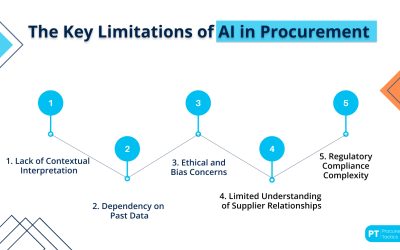Written by Marijn Overvest | Reviewed by Sjoerd Goedhart | Fact Checked by Ruud Emonds | Our editorial policy
Zero-Based Budgeting in Procurement — Ultimate Guide
Table of contents
Key take-aways
- Zero-based budgeting is a method that calls upon organizations to justify their funds for their expenses.
- Zero-based budget includes identifying business goals, developing strategies to achieve goals, discovering alternatives to fund processes, and prioritizing funds.
- Preventing complacency and wasteful spending is one of the main reasons why zero-based budgeting is important.
Get ready to take your procurement budgeting game to the next level! In this article, we’re diving headfirst into the exciting world of zero-based budgeting. Say goodbye to financial guesswork and hello to a budgeting strategy that’s as thrilling as it is effective.
What is Zero-based Budgeting?
Zero-based budgeting is a budgeting method that conjures organizations to justify and allocate their funds for every expense item without referring back to past budgets. In essence, this method calls for a fresh start, don’t you think?
This method makes way for scrutinizing the importance of expenses and the potential for generating returns. Thus, this allows for a fresh budget cycle that’s both dynamic and resource-savvy.
Zero-based budgeting promotes adequate cost management and sustainable resource utilization. With this, every dollar finds its purpose in the grand scheme of finances.
How it Works?
The heart of zero-based budgeting lies in the ability of organizations to look into their expenses with a fresh perspective. It allows them to evaluate how they spend every dollar without the influence of past budgets.
In the business context, zero-based budgeting allows organizations to incorporate their major objectives into their budgeting by associating them with certain functional divisions. Here, costs are initially grouped and then compared against previous performance and current expectations.
When you use zero-based budgeting in procurement, you get into the nitty-gritty details of your expenses. You examine every category of spending, making sure you’re not wasting any money. This process helps you make procurement more straightforward and efficient.
So, to put it simply, zero-based budgeting is like starting your procurement budget with a blank slate, looking closely at your expenses, and finding smarter, more cost-effective ways to do things. It’s like giving your budget a makeover to save money and work more efficiently.
“Embracing e-procurement is not just about streamlining operations; it’s about envisioning a future where every transaction is a testament to innovation and progress.”
How to Make a Zero-Based Budget
There are a few steps in zero-based budgeting to keep in mind. The process of zero-based budgeting follows the same basic steps:
1. Identify business goals
Begin by understanding your organization’s goals and objectives. These could include increasing revenue, reducing costs, expanding market share, or improving customer satisfaction.
Align your budgeting process with these goals. The budget should serve as a roadmap to achieve these objectives.
2. Develop and analyze new ways to achieve goals
Encourage your team to brainstorm and propose innovative ways to achieve the identified goals. Think outside the box and consider alternative strategies and tactics.
Evaluate each proposed approach in terms of its potential impact on achieving the goals and the resources required to implement it.
3. Discover new ways to fund business processes
With zero-based budgeting, you’re not limited by historical spending patterns. Examine each business process, department, or project individually.
Determine how much funding each area truly needs to accomplish its objectives. This involves scrutinizing every expense, from salaries to supplies.
4. Prioritize funds
Allocate resources based on the priority of each goal, project, or process. Some initiatives may have higher strategic importance and should receive a larger share of the budget.
Balance your budget to ensure that total expenses do not exceed the total available funds. This may involve reallocating funds from lower-priority areas to higher-priority ones.
By following these steps, you will determine what expenses go toward achieving business goals that directly benefit your company. Then, you can find new ways to spend.
With zero-based budgeting, you might find that your budget fluctuates significantly between periods. Because the budgets are not determined from past ones, it’s possible that this year you have $80,000 and $55,000 on the next.
Importance of Zero-Based Budgeting
Zero-based budgeting takes a fresh perspective and emphasizes the clear purpose behind your spending. It ensures that budgeting is in sync with the organization’s prevailing priorities and goals, allowing for swift adaptations to evolving market dynamics
By requiring a fresh evaluation of every expense, it prevents complacency and wasteful spending in procurement. This heightened scrutiny ensures that funds are allocated where they are most needed.
Furthermore, it helps in identifying cost-saving opportunities. In traditional budgeting, there’s a tendency to stick with existing spending patterns. Zero-based budgeting, on the other hand, challenges organizations to reevaluate their procurement practices, encouraging them to renegotiate contracts, explore cost-effective alternatives, and eliminate unnecessary expenses. This leads to substantial cost reductions and, ultimately, contributes to a healthier bottom line.
Another crucial aspect is its adaptability to changing conditions. In procurement, market dynamics, technological advancements, and shifts in demand can impact budget requirements. Zero-based budgeting approach enables organizations to quickly respond to these changes.
More importantly, zero-based budgeting fosters a culture of continuous improvement. By periodically reviewing and justifying all procurement expenses, it encourages innovation and the pursuit of efficiency gains. This not only keeps costs in check but also drives a commitment to excellence within the procurement department.
Difference Between Zero-based and Traditional Budgeting
Traditional budgeting typically involves incremental increases based on prior budgets. This often opts for a straightforward 2% spending hike, without requiring a comprehensive examination of both existing and new expenses, as is the case with zero-based budgeting.
In contrast, zero-based budgeting takes a more rigorous approach by demanding a thorough justification for both ongoing and new expenses. It places the responsibility on managers to provide sound reasoning for every cost, prioritizing cost optimization rather than solely focusing on revenue generation. In turn, this promotes maximizing value for the organization.
Advantages and Disadvantages of Zero-based Budgeting
Zero-based budgeting comes with several benefits as it does with drawbacks. Let’s take a look at all of it.
Example of Zero-based Budgeting
Imagine you own a small bakery that specializes in artisanal bread. Last year, you spent $20,000 on purchasing various ingredients and supplies from different suppliers.
Now, you’ve decided to implement zero-based budgeting for the upcoming year. As you analyze your expenses, you discover that you can source some of your ingredients locally at a lower cost. By doing so, you estimate that you can save $8,000.
In your zero-based budget, you’d allocate only $12,000 ($20,000 – $8,000) for ingredient expenses.
Further examination reveals that you can streamline your bakery’s energy usage by upgrading your ovens and lighting systems, potentially reducing your monthly utility bills by $3,500. Consequently, you budget $6,500 for utilities instead of $10,000.
Additionally, you explore cost-effective marketing strategies and realize that a strong social media presence can attract more customers. You decide to allocate $2,000 for marketing instead of the previous year’s $5,000 budget.
By embracing zero-based budgeting, you ensure that every dollar in your budget is thoughtfully allocated, helping your bakery operate more efficiently and profitably.
Conclusion
Zero-based budgeting plays a vital role in procurement by instilling discipline, identifying savings, adapting to changing circumstances, and promoting a culture of efficiency. These benefits not only enhance the financial health of an organization but also strengthen its ability to meet evolving procurement needs effectively.
Frequentlyasked questions
What is the zero-based budgeting?
Zero-based budgeting is a budgeting method that conjures organizations to justify and allocate their funds for every expense item without referring back to past budgets. This method makes way for scrutinizing the importance of expenses and the potential for generating returns. Thus, this allows for a fresh budget cycle that’s both dynamic and resource-savvy.
What is a zero-based budget and why is it important?
Zero-based budgeting takes a fresh perspective and emphasizes the clear purpose behind your spending. It ensures that budgeting is in sync with the organization’s prevailing priorities and goals, allowing for swift adaptations to evolving market dynamics. By incorporating this method into their financial practices, companies can make more informed decisions and allocate resources for maximum impact.
What is an example of a zero-based budgeting system?
Imagine you own a small bakery specializing in artisanal bread. Last year, you spent $20,000 on ingredients and supplies. Switching to zero-based budgeting, you discover $8,000 in savings by sourcing locally. So, you allocate $12,000 for ingredients.
By upgrading your equipment, you can reduce monthly utility bills by $3,500, so you budget $6,500 for utilities instead of $10,000. Exploring cost-effective marketing, you allocate $2,000 for marketing instead of the previous $5,000. Zero-based budgeting optimizes your bakery’s expenses, promoting efficiency and profitability.
About the author
My name is Marijn Overvest, I’m the founder of Procurement Tactics. I have a deep passion for procurement, and I’ve upskilled over 200 procurement teams from all over the world. When I’m not working, I love running and cycling.

Popular Procurement Courses
At Procurement Tactics, we educate Procurement Professionals to close better deals, secure supply and advance their career. Our courses are online and self-paced.

Negotiation Course for Procurement
Learn from industry experts who negotiated billion $ deals

Artificial Intelligence in Procurement Course
Unleash the power of artificial intelligence within procurement

AI Implementation Course for Procurement Leaders
Lead the AI shift with confidence in procurement
Related Articles
Human-AI Balance in Procurement — Striking A Balance
Written by Marijn Overvest | Reviewed by Sjoed Goedhart | Fact Checked by Ruud Emonds | Our editorial policyHuman-AI Balance in Procurement — Striking A BalanceAs taught in the Artificial Intelligence in Procurement Course / ★★★★★ 4.9 ratingTable of contents AI in...
Generative AI in Procurement — Exploring 5 Use Cases
Written by Marijn Overvest | Reviewed by Sjoed Goedhart | Fact Checked by Ruud Emonds | Our editorial policyGenerative AI in Procurement — Exploring 5 Use CasesAs taught in the Artificial Intelligence in Procurement Course / ★★★★★ 4.9 ratingTable of contents...
Managing Gen Z Talent: Future-Proofing Procurement Teams
Written by Marijn Overvest | Reviewed by Sjoerd GoedhartFact Checked by Ruud Emonds | Our editorial policyManaging Gen Z Talent: Future-Proofing Procurement TeamsAs taught in the Gen Z & Generational Management in Procurement / ★★★★★ 4.9 ratingTable of contents...









